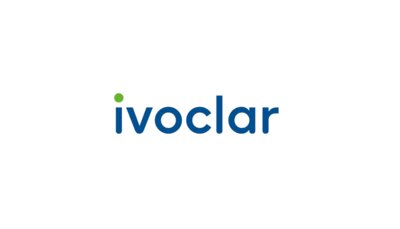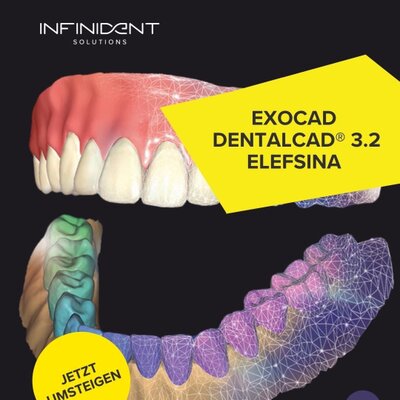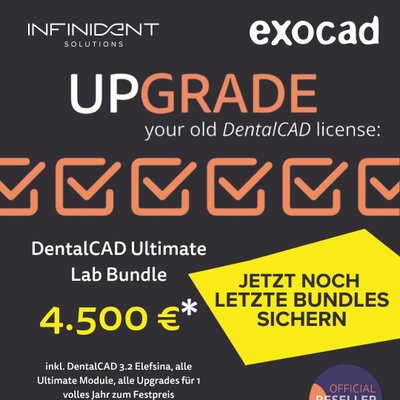
Where and how is IPS e.max ZirCAD Prime convincing?
Zirconium oxide is literally "on everyone's lips" today. The material has been successfully used clinically for a long time. But what are the small but subtle differences?
Zirconium oxide has scored with stability since its use in the dental field. For reasons of aesthetics, it has often been veneered - especially in the anterior region - to achieve the desired, individual and aesthetic appearance. However, with glass-ceramic veneered restorations, there is a risk of chipping within the veneer if the veneer thickness is too thick. Chewing stresses act particularly within the incisal edge and the cusps. However, the veneering ceramics commonly used today only have a strength of 100 to 200 MPa, which is too low to withstand the chewing loads when the layer thickness is too thick. The strength of highly translucent zirconia with extremely appealing aesthetic properties is many times higher in comparison.
The combination of a high-strength zirconium oxide in the dentin area with the highly translucent, yet stable zirconium oxide in the incisal area offers the ideal solution: The chipping risk can be almost completely avoided. At the same time, the effort required for manual application and firing of the veneering ceramic is reduced. Nevertheless, losses in aesthetics are rather marginal.
Tetragonal, polycrystalline zirconia has a very high strength and toughness and is therefore suitable for large, mechanically highly stressed restorations such as bridges and multi-unit works. In particular, cyclic tensile stresses in the area of connectors and anchor crowns can become critical for the long-term strength of large works. There it needs the high initial strength and high fracture toughness of 3Y-TZP.
In the occlusion area, when such 3Y-TZP is used, the conditions in the oral environment combined with the cyclic loading can cause degradation at low temperatures accompanied by spontaneous monoclinic phase formation. This ageing effect, which results in subsequent roughening of the surface, occurs when the zirconia surface is exposed to the oral environment without protection. Due to the roughness change within the outer surface layer, there is a risk of a negative influence on the abrasion of the antagonist.
This behaviour can be additionally counteracted by a higher stabilisation of the zirconia, if the incisal contains a higher stabilised zirconia. A higher degree of stabilisation reduces the tetragonal phase fraction, which can transform spontaneously. The higher yttrium content of 5 mol% in this incisal layer thus minimises the spontaneous formation of the monoclinic portion. This prevents a surface change, specifically a roughness change upon oral exposure.
Monolithically fabricated restorations made of zirconium oxide have to be polished on the functional surfaces that are in contact with the antagonist. Wear abrasion of the antagonist can be minimised by means of a high-gloss polish.
The zirconium oxide material IPS e.max ZirCAD Prime ideally solves the above challenges:
The combination of two zirconium oxide raw materials with high-strength 3Y-TZP in the dentin area and highly translucent 5Y-TZP in the incisal area achieves impressive aesthetics while maintaining high strength. IPS e.max ZirCAD Prime demonstrates the perfect properties where they are required. High strength and fracture toughness in the mechanically highly loaded dentin and in the cervical margin of the anchor crowns, and high translucency and ageing resistance with good polishability in the incisal area.
The Gradient Technology achieves a continuous transition between the two, different functional areas. This ensures that there are no visibly erratic changes in the material properties. In particular, the continuous translucency gradient is unique compared to the usually gradual increase in translucency towards the incisal layer.
IPS e.max ZirCAD Prime thus offers a universal solution for all types of processing, from the polishing to the staining technique and microlayering to full veneering, which enables the fabrication of combination restorations with consistently high esthetics.
Conclusion:
The zirconium oxide material IPS e.max ZirCAD Prime offers optimum material properties at every point of a restoration such as a multi-unit posterior bridge. All specific requirements with regard to mechanical and tribological properties, such as durability or wear, resistance to ageing and aesthetics, are met. The smooth transition between dentin and incisal zone improves performance by avoiding the gradual changes in properties typical of conventional polychromatic materials.

Original post published 20 January 2023: https://infinident.link/prime











